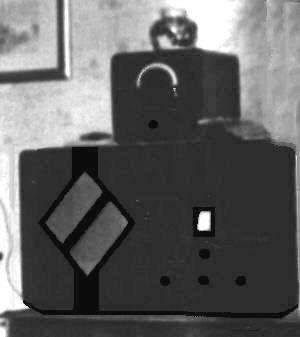
Under construction Old Radios Norwegian version
|
On December 12, 2001, it was 100 years since Marconi
managed to send the first Morse signals across the Atlantic. |
My favourite collection
Kolster Brandes 666 from 1933 Circuit diagram
 |
This radio we got in the mid 30-ties before I was born. In 1941 it became illegal to have a radio and it was delivered to the German occupants. It was a great day for my father when he could bring it back May 8 1945. He wanted to listen to the speech of King Hakon from London and several neighbors were invited. But the radio only made a rattling noise, a great disappointment to all. It was then repaired for I remember hearing the Children's Hour after the war from the main transmitter in Oslo on LW, 100 miles away. I soon realized that this was an outstanding radio with 6 large valves and one of the first super heterodynes made in England. It had MW and LW with an HF stage. One type of valves were used only, a pentode MVS/Pen, only 5 pins at the bottom and an anode connection at the top. The oscillator for the mixer used a circuit at the cathode. Most unusual, but it worked! Intermediate frequency was only 130 kHz. On top of the radio was a small cabinet tuner with SW 13-80 m. To get the SW the MW had to be set at a red mark at around 200 m's wavelength. It really was a double conversion super and the MW tuner worked as a fine frequency adjustment. The only reparation I made was to replace the volume control, 2 Mohm with switch. The radio was given to an Old Folks Home in 1956 when FM transmission started. Later on I have missed this radio very much due to a warm and pleasant sound. |
Tandberg Huldra 2 from 1938 Circuit diagram
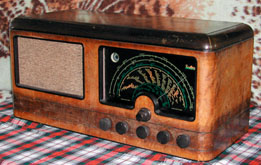
|
This
radio has tuned input RF stages on LW, MW and 4 SW-bands from 1,5 to 32
MHz and a push-pull output stage of 10 W. |
Blaupunkt Ideal 8W740 from 1940
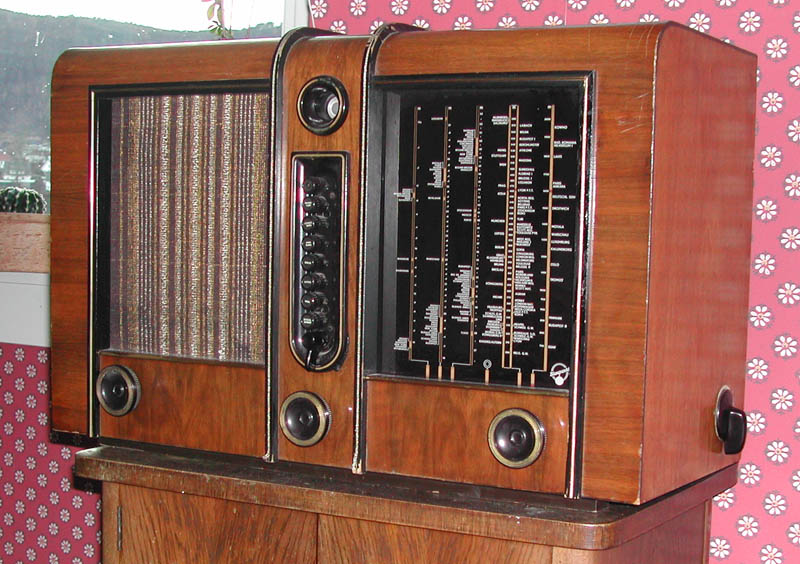 |
This is a masterpiece from
Germany with 8 valves (5 of steel), LW, MW and 3 SW bands and tuned RF
amplifiers on all bands. In addition
pushbuttons for 8 main German MW-stations. (Circuit
diagram). This radio was used during the war by my Granduncle in Bergen. He moved to a new house in Bergen in 1939. At the arrival of the war he made a secret room for the radio at the loft. To the Germans he delivered another much simpler radio. During evenings the Blaupunkt was taken out of hiding and with a radio like this reception of news from the whole world should be possible. His two daughters did not know about the radio till after the war. But they found it a little strange that a delegation of solemn men arrived during evenings to have meetings at the loft. |
Tandberg Huldra 4 from 1950
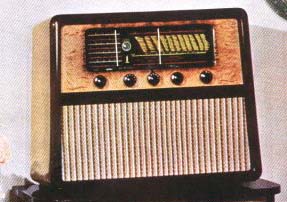 |
This must have been one of the worlds
best radios for a living room with 10 valves, 11 bands, coils on a rotating
turret, tuned RF amplifier and Push-pull output of 10
W. My Grandfather bought it in 1950. It made a great job in a narrow valley between the mountains in the western part of Norway with bad conditions for reception. Norwegian stations was heard during daytime and at evenings the whole of Europe was received on MW. The SW (8 bands) was exceptional using high Q RF coils. Circuit diagram Since that time it was given to me for care taking. Frequency indications are still very accurate and the only thing I have done is to replace valves now and then. |
Interested in other Old
Norwegian radios? Try "Norsk radiohistorisk forening": http://www.nrhf.no/
Do you want to listen to distant
stations? Try the Norwgian DX Club: http://www.dxlc.com
| As a boy I became
much interested in radios. Frequently new fascinating radios appeared. I had to watch them closely wishing I could buy. Just look at this Norwegian mains table radio: - very, very small and amazingly vital - internal ferrite antenna and precision frequency indications - Above all: only 3 valves |
Radionette Junior from 1953
|
New miniature valves
In 1950 I came across a new valve much smaller than before.
The name was DF91 and did not need much current from batteries. In USA the name
was 1T4. It was mounted to a plank of wood together with coils and some other
components. With reaction coupling some stations could be heard on my head
receiver.
As time went by I could make much better radios for household and travels:
In use 1957 |
|
A valve of immense power
|
Germany 1960, not much
left of the destructions of war. |
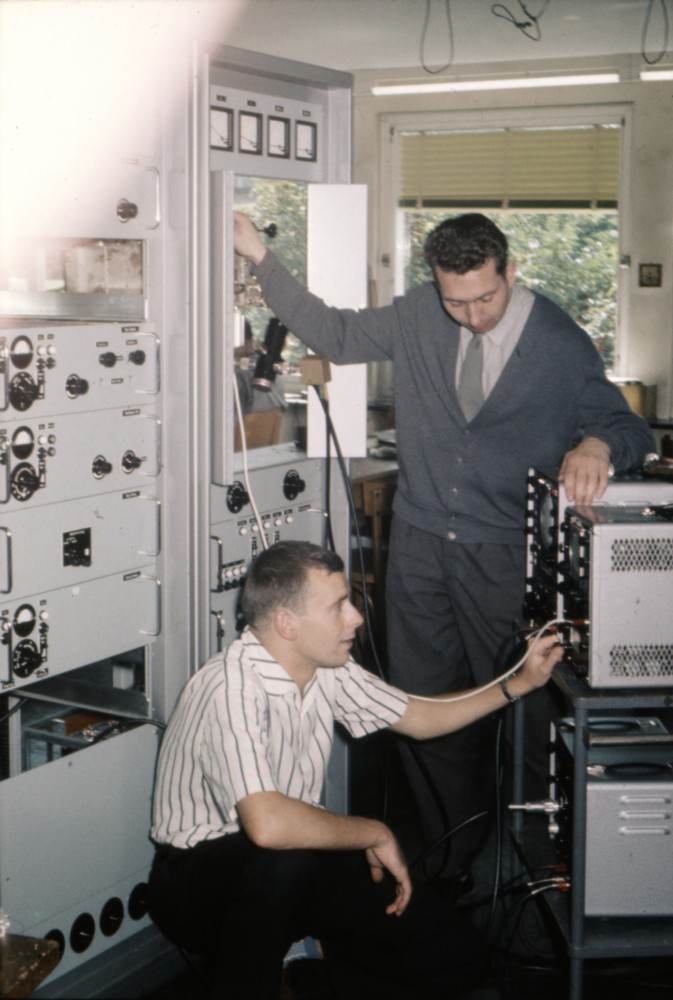
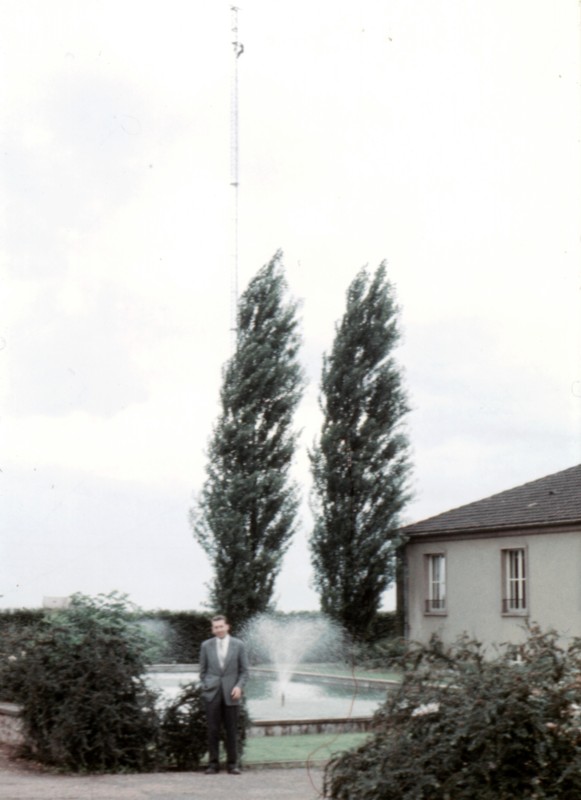
Adjusting a new TV-sender
In
front of
Rheinsender (120 kW - 1016 kHz)
Back to Berlin 2008
Still considered a friend of US
How is it with Germany?
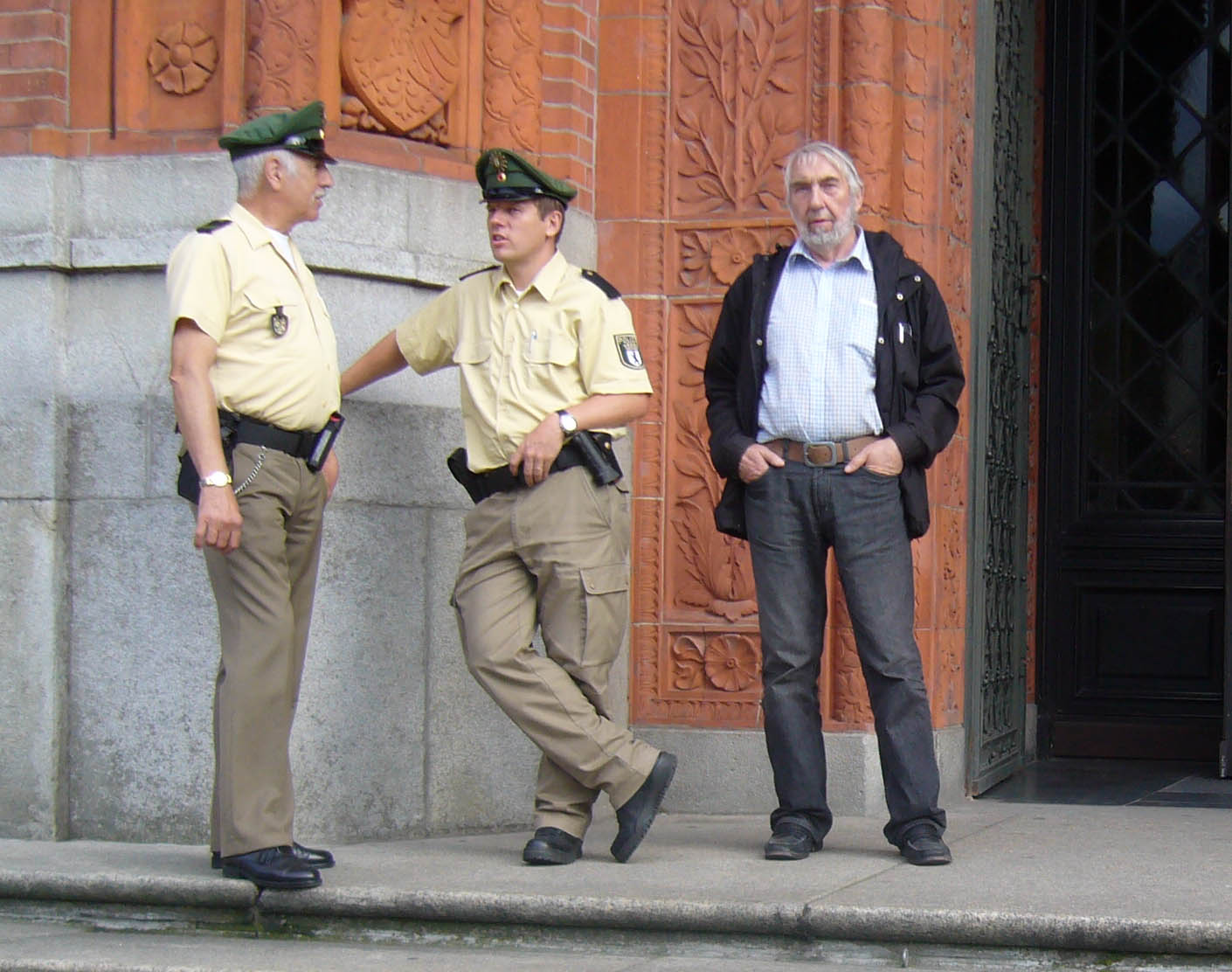 |